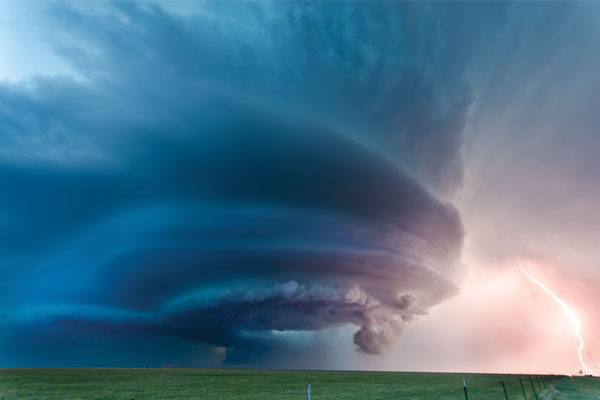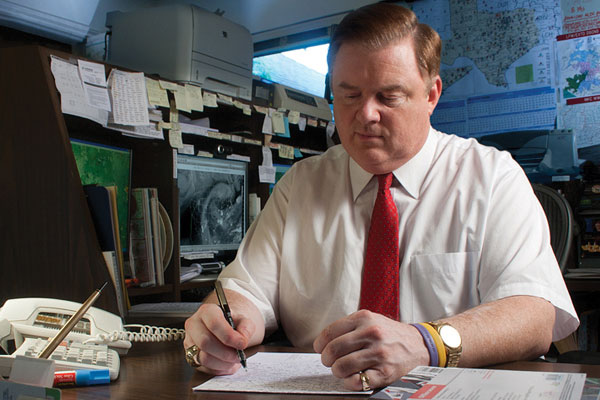A monster EF-5 tornado roared through the Oklahoma City suburb of Moore on May 20, 2013. The twister boasted winds exceeding 200 miles per hour as it ravaged schools and neighborhoods, killing dozens of people and injuring hundreds.
In its wake, many are questioning the relationship between tornadoes and climate change, and whether these monster storms are intensifying over time. Resident weather expert Troy Kimmel—senior lecturer of Studies in Weather and Climate in the Department of Geography and the Environment and chief meteorologist for KOKE FM Radio—explains the science behind these natural disasters.
According to Kimmel, though there were a record number of EF-1 and stronger tornadoes in the United States in 2011, that is not a sign of even more frequent and powerful tornadoes to come.
“Every weather pattern is unique and the atmospheric ‘recipe’ ingredients must come together just right,” Kimmel says. “Through analogue forecasting, we understand what weather patterns are most likely to produce severe thunderstorms and tornadoes. Some years you see very active weather patterns and then there are years you don’t.”
The ingredients for a thunderstorm are moisture, instability and atmospheric lift. For severe thunderstorms with tornadoes, Kimmel says, those ingredients must be more than marginal and be combined with strong winds aloft so that strong updrafts and rotation form in the parent thunderstorms.
In April 2011, very dynamic weather patterns produced extreme atmospheric lift and a high wind shear environment that resulted in damaging tornadoes in the middle Mississippi Valley, the Ohio River Valley as well as the southern United States. A month later, another very dynamic weather pattern produced the tornado that roared through Joplin, Mo., killing more than 150 people. This tornado ended up being the worst urban tornado event in modern history in the United States in terms of deaths, injuries and property damage.
Though climate change is an often-cited culprit for extreme weather in recent history, Kimmel says blaming it for the increase in tornadoes throughout the United States would be overly simplistic.
The region known as “Tornado Alley” is geographically located at the convergence of numerous atmospheric factors that, combined, create an optimal environment for tornado formation. The recent increase in tornadoes, Kimmel says, is basically indicative of a very dynamic weather pattern present in a high moisture and high instability environment.

